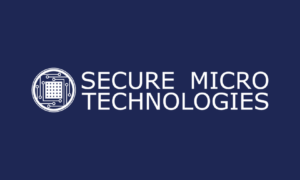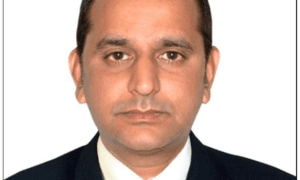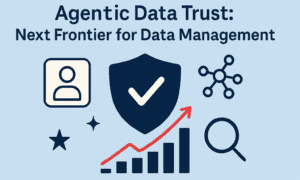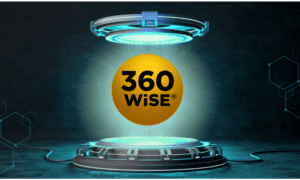In an era where cyberattacks are increasingly sophisticated and often state-sponsored, and where data breaches are measured in millions of records and billions of dollars, organizations can no longer rely solely on cryptographic schemes developed in the 1970s. Legacy algorithms such as RSA and ECC, once considered secure, are now vulnerable not only to evolving classical threats but also to the emerging capabilities of quantum computing. With advancements like Google’s 72-qubit Sycamore processor and IBM’s Quantum System Two showing significant progress, the cryptographic landscape is approaching a critical turning point.
A recent breach involving a major tech company’s email system, where threat actors forged authentication tokens and accessed sensitive government communications, serves as a stark reminder of the precision and scale of modern cyber threats. Although quantum computing was not used in this incident, it highlights how skilled adversaries are already capable of exploiting existing cryptographic vulnerabilities, making it clear that incremental fixes are no longer sufficient.
As quantum computing continues to evolve, even the strongest classical encryption methods will eventually be compromised. Post-quantum cryptography is no longer a future consideration, it is a necessary shift. Organizations must take immediate action to evaluate, adopt, and implement quantum-resistant algorithms to secure critical systems and sensitive data before current protections become ineffective.
Mr. Rakesh Keshava is a seasoned Security Architect with over 17 years of experience, leading efforts to advance Post-Quantum Cryptography (PQC) adoption across enterprise environments. As a Distinguished Fellow of the Soft Computing Research Society (SCRS) and a Senior Member of IEEE, he brings a rare combination of deep technical knowledge and strategic leadership. Rakesh has been instrumental in aligning executive priorities with hands-on engineering practices, helping organizations design and implement quantum-resilient security architectures. He is also a respected keynote speaker at prestigious international conferences, where he shares insights on cryptographic modernization and the future of secure computing.
The Quantum Threat: Real, Imminent, and Strategic
“Many organizations still believe they can wait until quantum computing becomes practical,” says Mr. Rakesh. “But that’s a false sense of security. The real risk is harvest now, decrypt later. Data encrypted today, especially long-lived sensitive data can be stored by adversaries and decrypted when quantum computing catches up.”
Mr. Rakesh emphasizes that government agencies, financial institutions, and healthcare providers are especially vulnerable. These sectors handle sensitive transactions and communications that must remain confidential for decades. For them, it’s not just about compliance or theoretical attacks, it’s about operational survival in a post-quantum world.
Why Hybrid Cryptography Is the Best First Step
Migrating from RSA or ECC to quantum resistant algorithms cannot happen overnight. Systems, applications, certificate chains, and compliance regimes are all deeply intertwined with classical cryptography.
“Hybrid cryptography allows us to move forward without breaking everything,” Mr. Rakesh explains. “It involves combining a classical algorithm like RSA or ECDSA with a quantum-safe algorithm such as CRYSTALS-Dilithium or Falcon into a single cryptographic object, typically a certificate or signed message.”
This approach allows existing systems to continue functioning while embedding a post-quantum algorithm that can be validated by future systems. For example, a certificate could carry both an RSA signature and a Falcon signature, allowing systems that support only classical cryptography to verify one, and future ready systems to verify both.
“Think of it as dual-language signage during a migration everyone can understand something, and no one gets lost,” he adds.
A visual progression illustrating the transition from traditional RSA/ECC certificates to hybrid dual-signature certificates, and eventually to fully post-quantum certificates; each phase designed to preserve trust while enabling a smooth evolution.
How to Use This Roadmap
- Audit & Inventory: Map where your current certificates sit on the left side.
- Pilot Hybrid Certs: Introduce the middle stage in non-production traffic first.
- Plan Decommissioning: Define triggers; regulatory approval, browser support, or risk thresholds for when you’ll cut over to the right-hand post-quantum stage.
- Update Policies: Ensure key-management, HSM usage, and compliance documentation all reference the hybrid phase, so auditors can see a clear transition plan.
In short, the figure (and its three panels) turns an abstract migration strategy into a concrete, step-by-step visual narrative helping boards, auditors, and engineering teams see why hybrid certificates are the safest bridge to a quantum-resilient future.
Navigating Technical and Organizational Hurdles
Adopting a hybrid cryptographic approach offers a practical path for transitioning to post-quantum readiness but, it’s not without challenges. On the technical front, increased certificate and signature sizes can introduce latency or disrupt legacy systems designed with strict size constraints.
“There’s a lot of nuance,” says Mr.Rakesh Keshava. “It’s not just about swapping algorithms. You have to ensure your systems can handle larger certificates, extended TLS handshake payloads, and updated PKI policies. It requires rethinking how cryptography interacts with your infrastructure at every layer.”
Beyond the technical considerations, organizational obstacles can be even more complex. Many enterprises lack a clear inventory of where and how cryptography is used across their environments. Without that visibility, planning a secure and effective transition becomes guesswork.
Mr.Rakesh underscores the importance of starting with comprehensive cryptographic discovery. This should be followed by a phased implementation strategy that includes cross-functional collaboration bringing together teams from infrastructure, compliance, security, and executive leadership to ensure alignment and long-term success.
Governance, Standards, and the Influence of NIST
Mr.Rakesh Keshava has been actively monitoring the progress of the National Institute of Standards and Technology (NIST), which made a pivotal move in 2022 by selecting four algorithms for post-quantum cryptographic standardization. Among them are CRYSTALS-Kyber for key encapsulation and CRYSTALS-Dilithium for digital signatures.
“NIST has conducted a rigorous and transparent evaluation process, which builds trust in the chosen algorithms,” says Mr.Rakesh. “But real-world adoption takes time. Hardware manufacturers, software ecosystems, and regulatory frameworks all need to evolve in parallel.”
This is where strategic leadership becomes essential. Organizations looking to stay ahead of the curve must not only follow emerging standards but also prioritize cryptographic agility, the capability to seamlessly integrate or replace cryptographic algorithms without overhauling their entire infrastructure.
Real World Impact: From Certificates to Resilient Disaster Recovery
Mr. Rakesh Keshava advises large enterprises to architect their Public Key Infrastructure (PKI) using hybrid certificates, digital credentials that include both classical (for example, RSA) and post quantum (for example, Falcon) signatures. These dual-layered certificates are especially critical for protecting machine and service identities across distributed environments.
“Imagine two critical regions connected by an encrypted link,” Mr.Rakesh explains. “With a hybrid certificate in place, even if one region suffers a physical failure, the encrypted channel remains valid and trustworthy; now and well into a future where quantum computers may render today’s cryptography obsolete.”
This approach offers more than just a technical advantage. By combining post quantum security with widely adopted algorithms, organizations can meet today’s compliance standards while discreetly laying the foundation for quantum resilience. It is a forward-thinking strategy that strengthens both disaster recovery plans and long-term data integrity without disrupting existing infrastructure.
Strategic Guidance for Enterprises and Security Leaders
As organizations prepare for the post-quantum era, Mr. Rakesh Keshava offers a forward-thinking approach that security leaders can begin applying today.
-
Start with a cryptographic inventory
You cannot protect what you do not know exists. Begin by identifying where cryptographic algorithms like RSA, ECC, and SHA are being used, whether in TLS endpoints, code-signing workflows, encrypted databases, or data backups. -
Evaluate your data retention policies
If your data must remain secure through the 2030s and beyond, it’s time to begin the transition to quantum-resistant cryptography. Waiting increases the risk of long-term data compromise. -
Test hybrid certificates in staging environments
Before deploying at scale, validate your hybrid cryptographic architecture in a test environment. Assess certificate sizes, TLS handshake performance, and chain compatibility to identify and resolve issues early. -
Embrace cryptographic agility
Choose technologies, libraries, and cloud services that support flexible integration of new cryptographic standards. Agility ensures your systems can adapt without undergoing disruptive overhauls. -
Educate internal stakeholders
Post-quantum readiness is more than a technical upgrade; it’s a strategic imperative. Board members, compliance teams, product leaders, and auditors should all understand the potential impact and timeline of the cryptographic transition.
Mr. Rakesh emphasizes that moving to post-quantum cryptography is inevitable. By adopting hybrid models today, organizations create a foundation for resilience; one that maintains compatibility, protects data, and reduces the risk of last-minute transitions.
“Organizations that take proactive steps today will lead on security and compliance tomorrow. The window to prepare is open but, not indefinitely.”
“The views and opinions expressed in this article are the author’s own and do not necessarily reflect those of any affiliated organizations or institutions.”



































